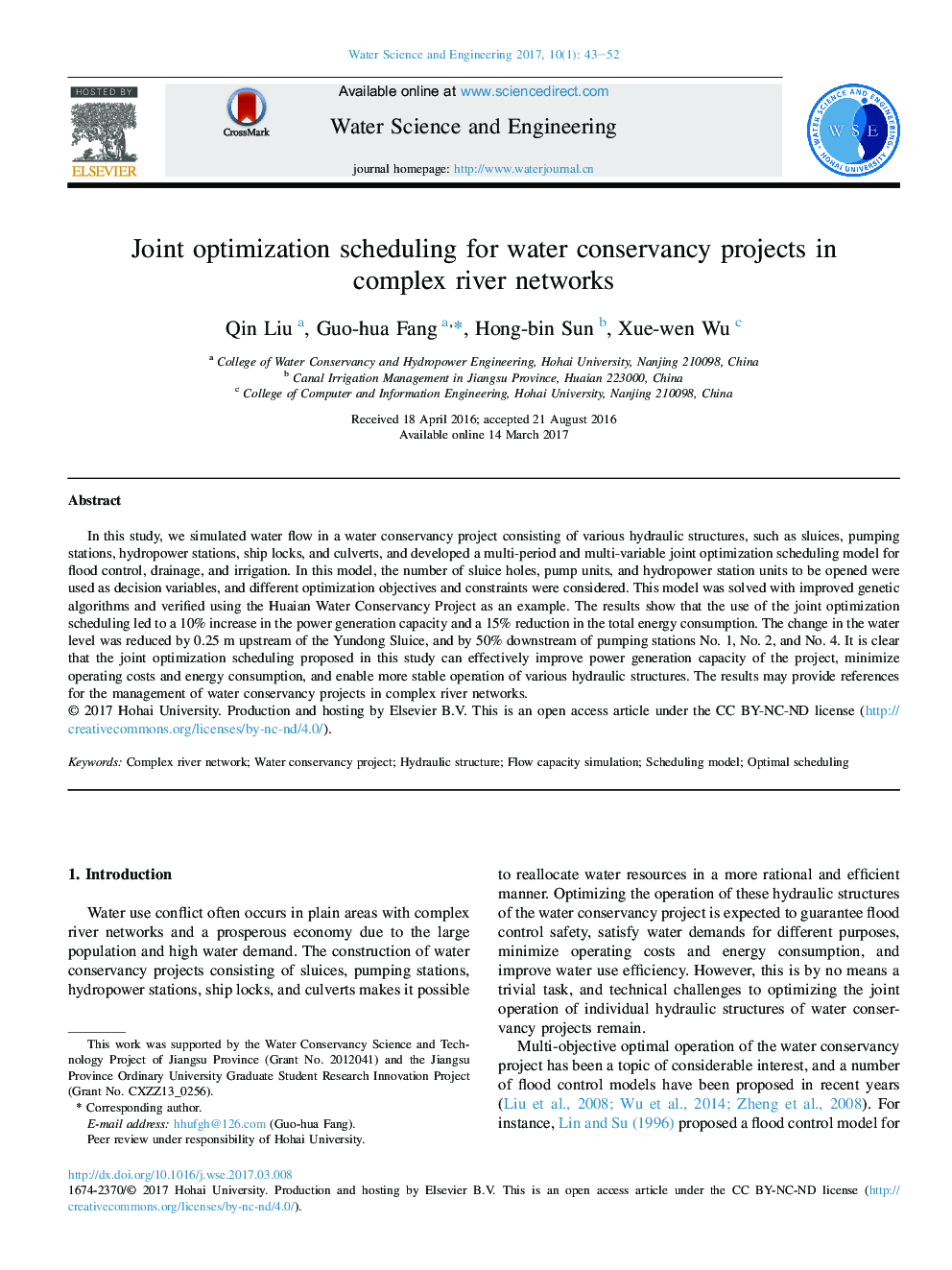| Article ID | Journal | Published Year | Pages | File Type |
|---|---|---|---|---|
| 4929471 | Water Science and Engineering | 2017 | 10 Pages |
In this study, we simulated water flow in a water conservancy project consisting of various hydraulic structures, such as sluices, pumping stations, hydropower stations, ship locks, and culverts, and developed a multi-period and multi-variable joint optimization scheduling model for flood control, drainage, and irrigation. In this model, the number of sluice holes, pump units, and hydropower station units to be opened were used as decision variables, and different optimization objectives and constraints were considered. This model was solved with improved genetic algorithms and verified using the Huaian Water Conservancy Project as an example. The results show that the use of the joint optimization scheduling led to a 10% increase in the power generation capacity and a 15% reduction in the total energy consumption. The change in the water level was reduced by 0.25Â m upstream of the Yundong Sluice, and by 50% downstream of pumping stations No. 1, No. 2, and No. 4. It is clear that the joint optimization scheduling proposed in this study can effectively improve power generation capacity of the project, minimize operating costs and energy consumption, and enable more stable operation of various hydraulic structures. The results may provide references for the management of water conservancy projects in complex river networks.
